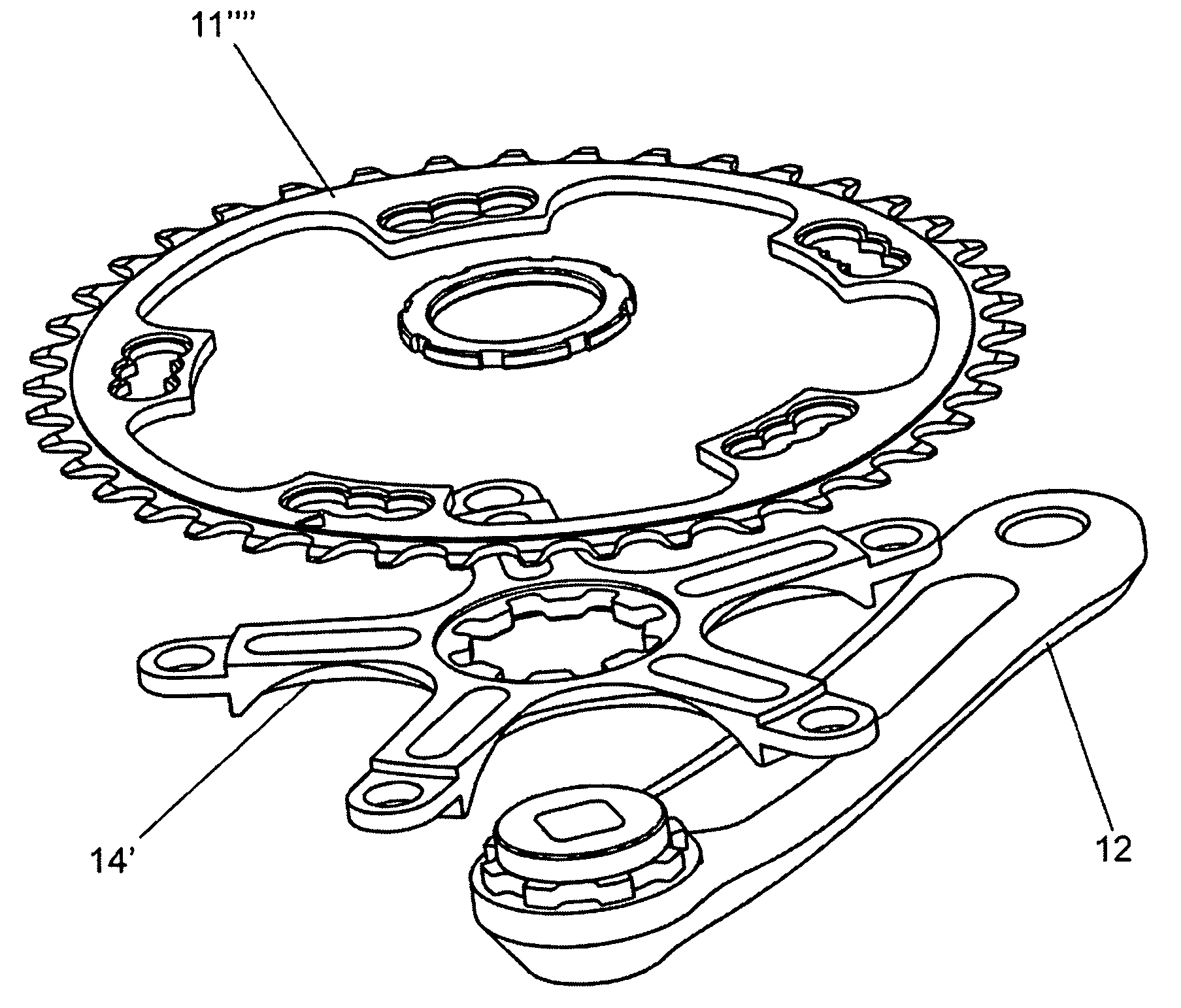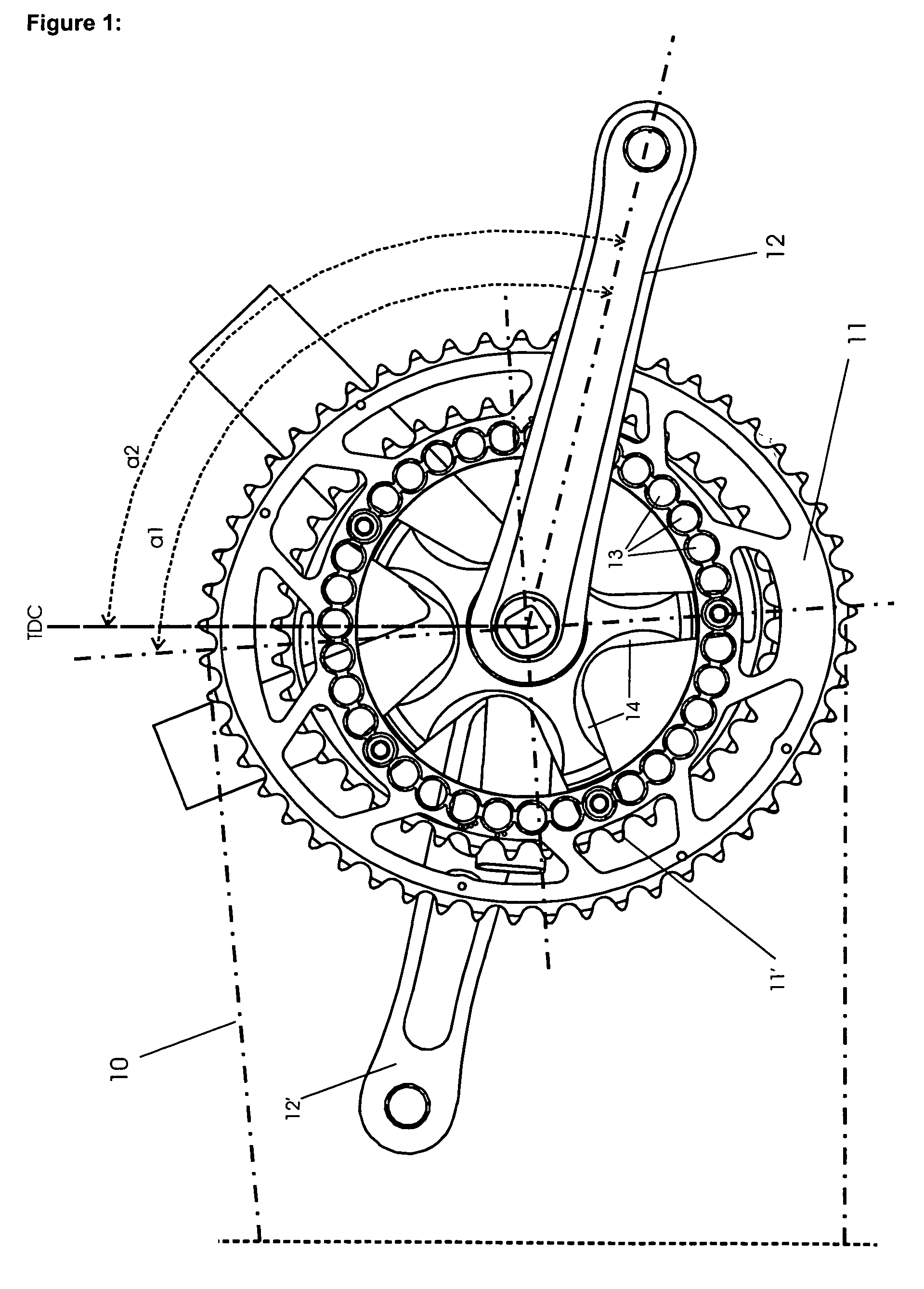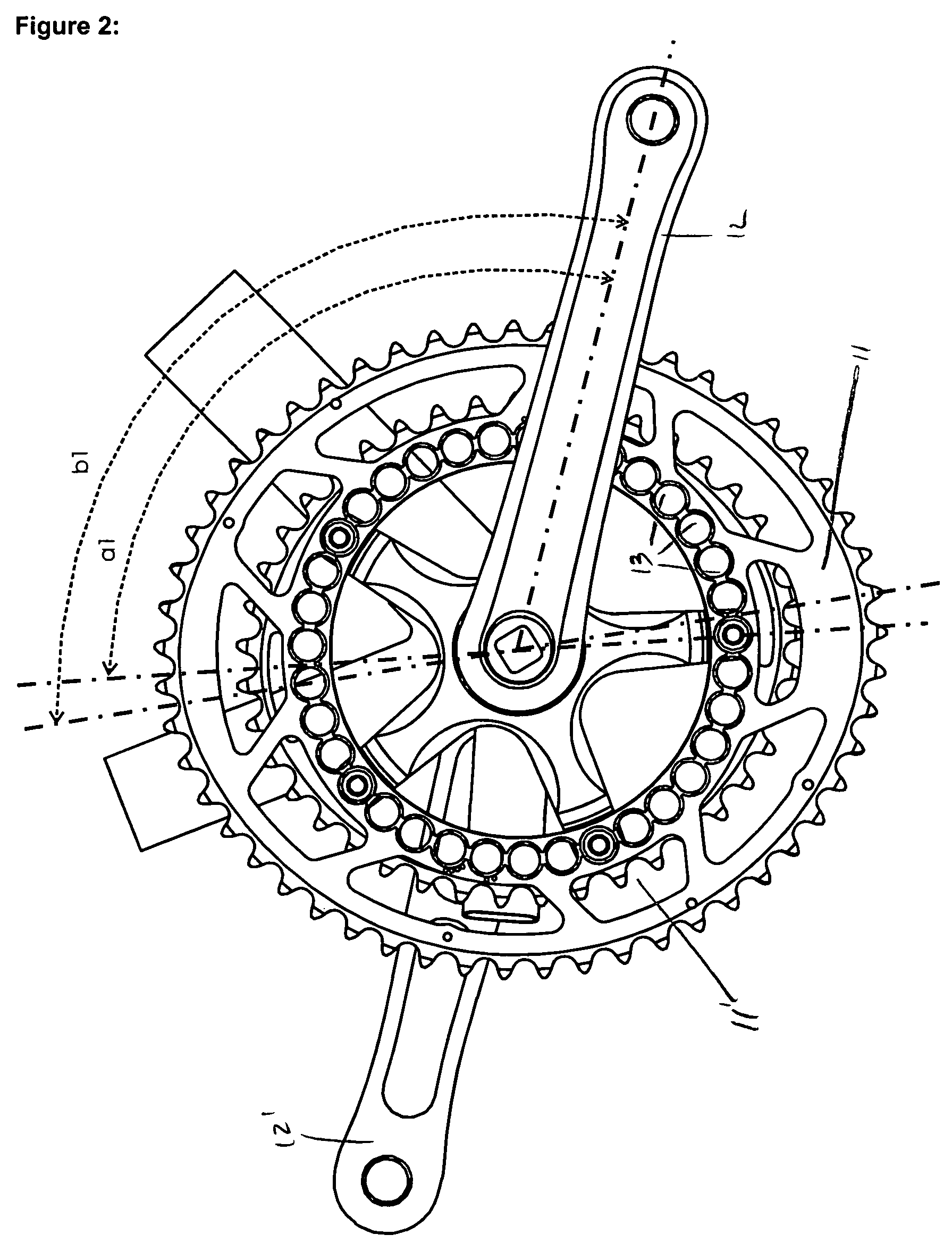Ovoid chainrings for optimising conventional pedaling
a technology of conventional pedaling and chainrings, which is applied in the direction of hoisting equipment, belts/chains/gearings, portability lifting, etc., can solve the problems of lack of success, inability to combine enough well-conceived factors, and inability to achieve the effect of avoiding stress spikes and the inherent knee damag
- Summary
- Abstract
- Description
- Claims
- Application Information
AI Technical Summary
Benefits of technology
Problems solved by technology
Method used
Image
Examples
Embodiment Construction
[0045]FIG. 1 shows a pair of cranks (12, 12′) assembling two ovoid chainrings 11 and 11′, and with a chain (not shown), which is represented by a dotted line 10, at the moment that it engages the ovoid chainring 11 at the time of maximum gear ratio. Angle a1 is the angle obtained when the orientation of the ovoid chainring 11 is in the initial adjustment, and it is a design parameter. Angle a2 is the angle of the orientation with reference to TDC, and will vary slightly depending on where the chain 10 comes from, i.e. from the sprocket of the cassette (not shown) being used at any given time, and on the geometry of the bicycle (not shown), specifically on the length and angle of the stays that link the bottom bracket with the rear wheel.
[0046]FIG. 2 shows the same crankset (12, 12′, 11, 11′) and indicates the variance in the orientation, viz., compare a1 and b1, between the major axes of the separate chainrings of the invention.
[0047]FIG. 1 shows the reference orientation for this o...
PUM
 Login to View More
Login to View More Abstract
Description
Claims
Application Information
 Login to View More
Login to View More - R&D
- Intellectual Property
- Life Sciences
- Materials
- Tech Scout
- Unparalleled Data Quality
- Higher Quality Content
- 60% Fewer Hallucinations
Browse by: Latest US Patents, China's latest patents, Technical Efficacy Thesaurus, Application Domain, Technology Topic, Popular Technical Reports.
© 2025 PatSnap. All rights reserved.Legal|Privacy policy|Modern Slavery Act Transparency Statement|Sitemap|About US| Contact US: help@patsnap.com



